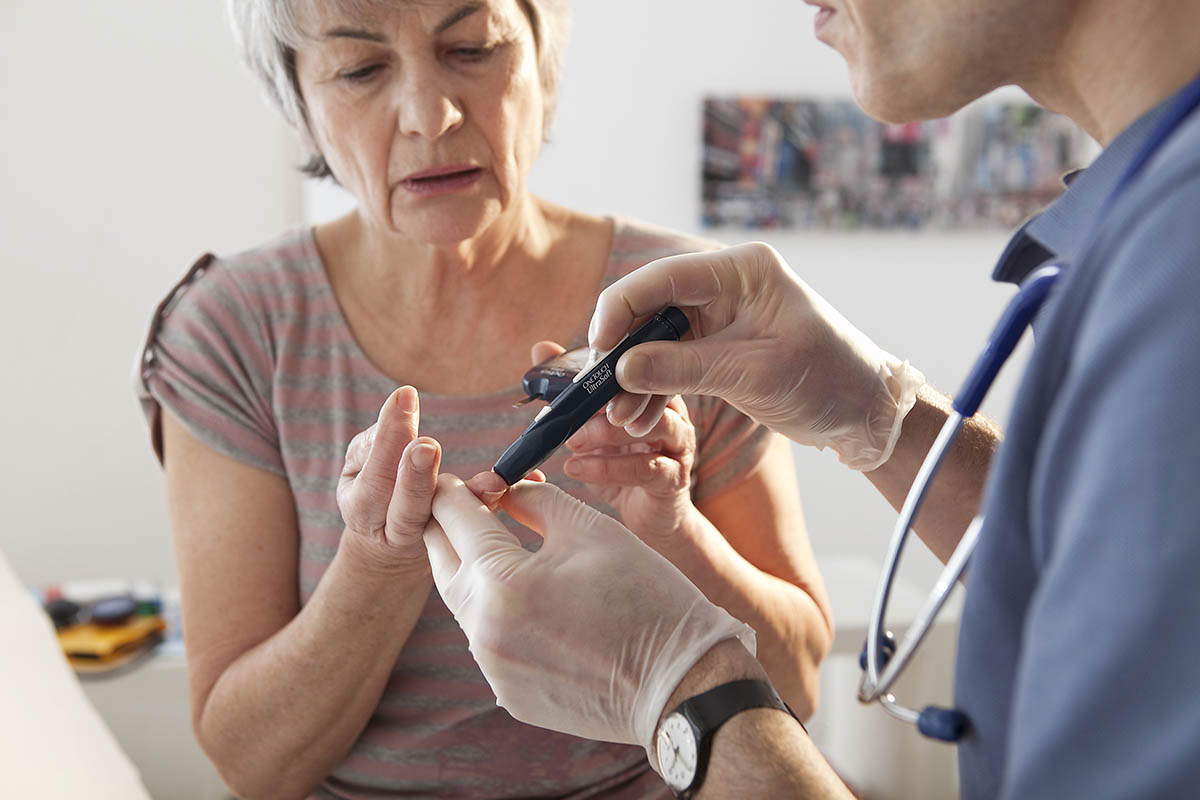Diabetes mellitus is one of the most prevalent diseases affecting adults. Though diet and exercise can help to prevent some forms of the disease and to manage its symptoms after onset, it’s still alarmingly common: according to the American Diabetes Association, as of 2012, 29.1 million Americans (9.3% of the population) had diabetes, with 1.4 million new cases diagnosed every year and an estimated 8.1 million patients undiagnosed.

When a patient is initially diagnosed with diabetes, it’s often very overwhelming. There are so many changes that the patient will be asked to make, and it can be difficult to learn how to adapt a completely different lifestyle while also still reeling from being diagnosed with a serious, chronic disease. Physicians often struggle to explain the things that the patient needs to know in a way that makes sense to them, and that gap in communication can make things even more complicated. Lifestyle changes are vital for patients with diabetes in order to preserve their health and prolong and improve their lives.

Because of this, patients and physicians alike are often left wishing that there was a better, easier way to self-manage diabetes, especially for patients who are just learning how to do so. Diabetics must learn new diets, how nutritional value is important to their blood sugar levels, how to take and interpret blood glucose levels, and how to identify the dangerous symptoms of hypoglycemia. In patients who have to take insulin shots, such as those with type I diabetes, there is even more to learn, including when and how to give themselves injections. It’s certainly not an easy adjustment to make, and it can be a very emotional time for patients and their families, filled with fear for the future and missing old habits.

Augmented Reality can potentially offer a better way to manage the symptoms of diabetes. Presently, AR is being used in conjunction with smart phones to assist dietary self-monitoring of portion control and nutritional value. The technology can help diabetic people to approximate the glycemic index of a food and to determine how that might affect their blood sugar. It’s a good system that takes some of the worry and guesswork out of managing a diabetic diet.
And AR can help with more than just eating habits! AR could be used to pinpoint where on the body insulin should be injected, a helpful feature for both newly diagnosed diabetics and those caring for diabetic loved ones. It could also keep a log of where insulin was injected in the recent past to help avoid lipoatrophy. AR could show patients how much insulin to inject to avoid an accidental overdose that is a common cause of potentially fatal hypoglycemia.
We also believe that exercise programs, foot maintenance, and capillary glucose measurement are all exciting possibilities that could be looked at in the future. The possibilities are endless! We at ARinMED would love to see AR technology make life a little bit easier for diabetic people, especially with the incidence of diabetes diagnoses on the rise. We think AR has the power to prevent and manage the disease!vHave your own ideas for a Diabetes App? Let us know what you’re thinking in the comments section!
Source: https://www.ncbi.nlm.nih.gov/pmc/articles/PMC5104301/pdf/dmso-9-381.pdf







